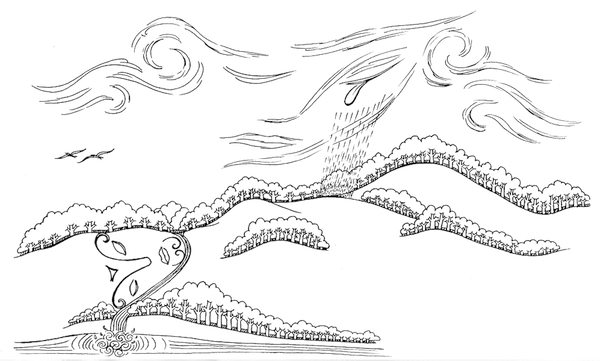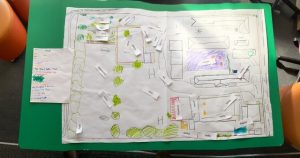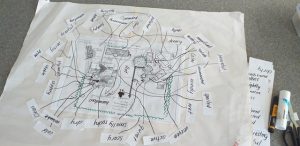
Ranginui rāua ko Papatūānuku
Central to Enviroschools learning is providing opportunities for young people to explore their school/ centre and wider environment through a range of experiences.
Working with student envirogroups through experiential and mapping activities can empower them to lead a compilation of ideas (Pool of Knowledge/ Puna Mātauranga) about their school environment and sustainability. Using these collective understandings they can then craft a Whole School Vision. The Marlborough team have been enjoying doing just that and are already seeing the benefits.
Witherlea School’s ‘Green Ninjas’ have been meeting each week to explore what sustainability initiatives the school already has in place, and to create a map of where these things are happening. They are now exploring how they can gather ideas from the rest of the students, plus teachers, support staff, whānau and the wider school community to develop a whole school vision for sustainability at Witherlea. They are practicing some fun activities to help everyone think about how they would like their school to be. Once gathered and collated, students will share these ideas with teachers at a staff meeting.
Fairhall School’s Enviro-council has been looking at ways to create a Green Gold walk in their school to share lots of the different actions they take to look after the environment. Their Enviro-council came up with some plans following the Action Learning Cycle planner and have been doing some leadership activities on how to include the Enviroschools guiding principles in their next steps with the wider school.
Rapaura School’s Envirogroup are also starting on their journey to write an Enviroschools vision statement. For the plan to reflect the voice of the whole school, the Envirogroup wanted all the teachers on board and decided to present their ideas of how this could be done at a staff meeting. A great example of ‘Empowered Students’ in action! Leading up to the staff meeting they chose and practiced some activities teachers could use with their classes to find out what they thought about their school environment. One of these was the ‘Word Hunt’ activity from the Enviroschools Me in My Environment resource, which helps children to recognise and describe the variety and diversity in their environment.

A map of the environment, both natural and built, can help understanding of the current situation and provide a basis upon which to create a vision for the future and measure change.

An example of how the Enviroschools experiential activities can add layers of information onto a school map.
Banner image: Witherlea Envirogroup students map the school environment and collate information from the whole school.
